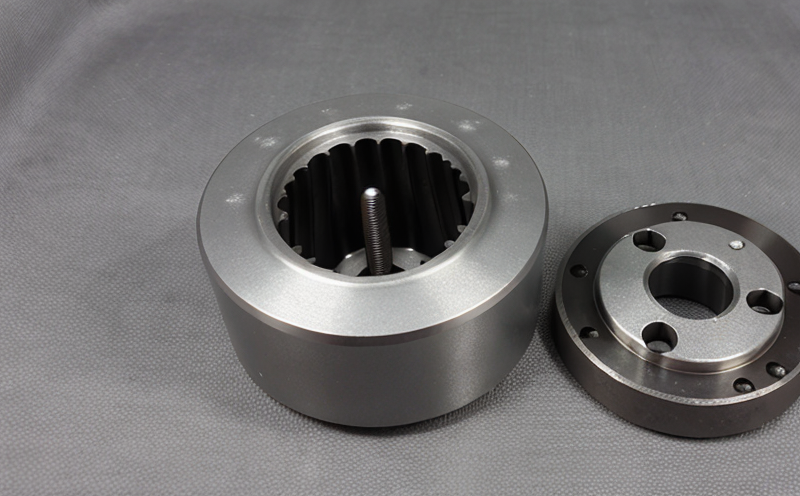ASTM F3301 Qualification of AM Processes in Aerospace
The qualification of Additive Manufacturing (AM) processes within the aerospace industry has become increasingly important as manufacturers seek to ensure that these advanced manufacturing techniques produce parts with consistent quality and reliability. ASTM F3301-19, Standard Practice for Determining Qualification Specimens and Parameters for Testing Additively Manufactured Parts, provides a structured framework for qualifying AM processes used in the aerospace sector.
This standard is particularly relevant because it addresses the need to validate that AM parts meet or exceed the stringent quality standards required by the aviation industry. By following ASTM F3301-19, companies can demonstrate compliance with international standards and ensure they are meeting the rigorous demands of their customers and regulatory bodies.
The qualification process outlined in ASTM F3301 involves several key steps which include selecting appropriate test specimens based on material properties, geometry, and intended use. Specimens must be designed to simulate real-world loading conditions as closely as possible while also being representative of the full range of dimensions expected from the AM process under scrutiny.
Once suitable specimens have been prepared, they undergo various mechanical tests such as tensile strength testing, hardness measurements using methods like Rockwell or Vickers scales, and bend testing to assess ductility. These tests help determine if the material properties achieved through AM are comparable to those obtained via traditional manufacturing techniques.
The results of these tests are then compared against specified acceptance criteria defined in ASTM F3301-19. If all test results fall within acceptable limits, it can be concluded that the AM process being evaluated meets the required specifications for producing parts suitable for use in aerospace applications.
It is important to note that this qualification process does not end after initial qualification; ongoing monitoring and periodic requalification are necessary throughout the lifecycle of an AM process. This ensures continued compliance with relevant standards and helps maintain consistent part quality over time.
In summary, ASTM F3301-19 offers a comprehensive approach towards qualifying AM processes specifically designed for aerospace applications. It provides clear guidelines on how to select appropriate test specimens, perform necessary mechanical tests, interpret results against established criteria, and document findings in a manner that supports regulatory compliance.
Benefits
The implementation of ASTM F3301-19 brings numerous advantages to organizations involved in additive manufacturing within the aerospace industry. Firstly, it enhances confidence among stakeholders regarding the reliability and safety of AM parts used in critical components such as engines, airframes, and landing gear.
By adhering to this standard, manufacturers can improve their reputation by demonstrating a commitment to quality assurance practices that align with international norms. Additionally, compliance helps reduce risks associated with non-compliant products entering the market or during inspections by regulatory authorities like FAA (Federal Aviation Administration).
Moreover, following ASTM F3301-19 facilitates smoother integration of new technologies into existing supply chains by providing a common language and set of procedures for evaluating AM processes. This promotes interoperability between different suppliers and fosters innovation across the entire ecosystem.
Achieving qualification under this standard also opens up opportunities for broader adoption of AM technology in aerospace manufacturing, potentially leading to cost savings through reduced material waste and increased production flexibility. Furthermore, it supports sustainable development goals by promoting efficient use of resources throughout the supply chain.
Industry Applications
The application of ASTM F3301-19 extends beyond just qualification; its principles are integral to various aspects of aerospace manufacturing that involve AM processes. One significant area is part development where engineers design new components using CAD software before converting these designs into physical prototypes through 3D printing.
Another critical phase involves process optimization, which ensures that the chosen AM technique produces parts with optimal performance characteristics while maintaining cost-effectiveness. Here, ASTM F3301-19 guides practitioners on selecting appropriate testing methods and interpreting results accurately to make informed decisions about process parameters like layer thickness, scanning speed, and laser power.
Once prototypes have been developed and optimized, full-scale production can commence. At this stage, ASTM F3301-19 continues to play a vital role by providing standards for ongoing quality control measures such as random sampling of parts during batch runs and periodic requalification of processes based on accumulated data.
Another important application pertains to repair and maintenance activities where damaged or worn-out components need replacement. In these cases, ASTM F3301-19 ensures that repairs are done using AM techniques that produce parts indistinguishable from original equipment manufacture (OEM) items in terms of material properties and structural integrity.
International Acceptance and Recognition
Aerospace manufacturers worldwide recognize the importance of ASTM F3301-19 due to its alignment with global standards such as those set forth by ISO, EN, IEC, and FAA. Compliance with this standard enhances interoperability between different suppliers and promotes consistency in part quality across borders.
Many leading aerospace companies have adopted ASTM F3301-19 as a benchmark for their internal quality management systems. By incorporating its requirements into procurement specifications and certification processes, they ensure that only qualified AM processes are used in their supply chains.
The widespread acceptance of ASTM F3301-19 has led to increased collaboration among industry players who share best practices and resources aimed at advancing the state-of-the-art in aerospace manufacturing. This collaborative environment fosters continuous improvement in both process capabilities and product quality, ultimately benefiting end-users like airlines and defense contractors.
Moreover, international regulatory bodies such as FAA have acknowledged ASTM F3301-19's role in ensuring safety-critical components meet stringent quality standards. Their endorsement reinforces the trustworthiness of this standard among professionals working across different geographies.





